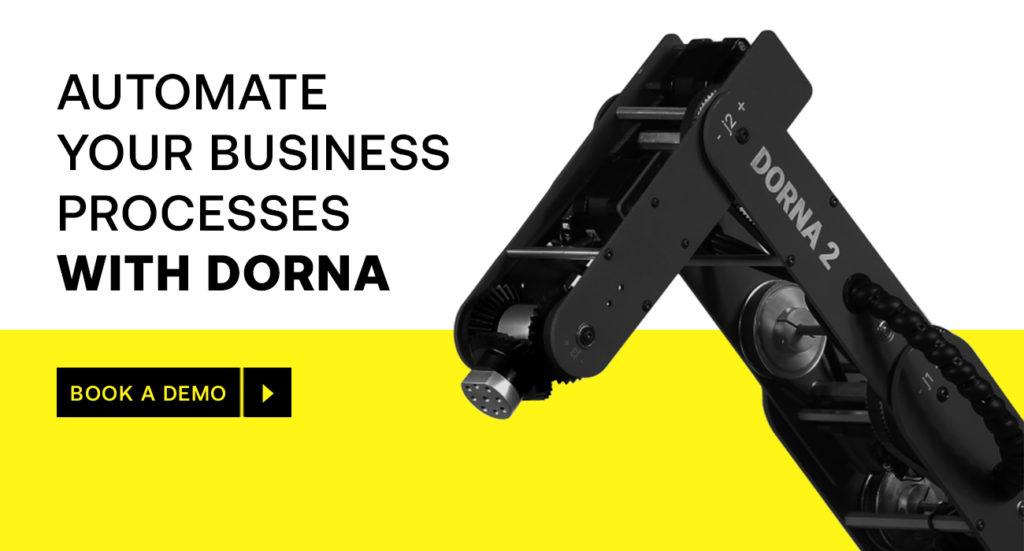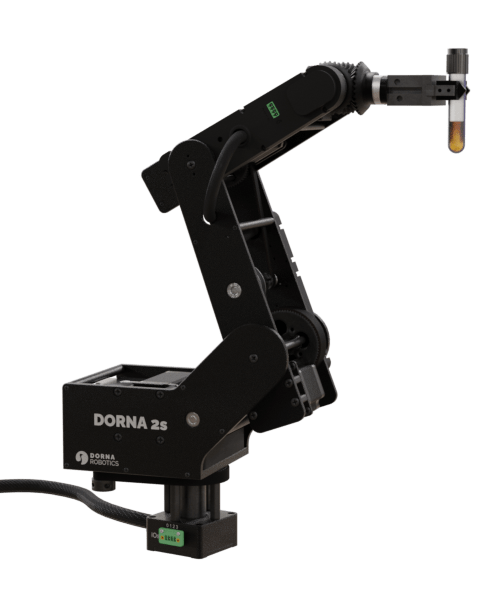Blogs
Types Of Robot Grippers And Their Applications
The gripper is an end-of-arm tool that makes a robotic arm versatile and efficient for different processes like pick and…
27 minute read
In This Article
In today’s rapidly evolving business landscape, Small and Medium-sized Enterprises (SMEs) face increasing pressure to streamline operations, enhance productivity, and stay competitive. One powerful solution gaining momentum in the SME sector is automation.
Robotic automation, in particular, is emerging as a transformative force that can revolutionize processes, optimize resources, and drive growth. However, for many SMEs, diving into automation can seem challenging. Let’s delve deeper into what robotic automation entails and how it can benefit SMEs.
At its core, robotic automation involves using robots or robotic systems to perform tasks traditionally carried out by humans. This technology encompasses a wide range of applications, from simple pick-and-place tasks to complex assembly processes. Robotic automation offers several advantages for SMEs, including increased efficiency, precision, and scalability.
Before diving into automation, SMEs must assess their specific needs and objectives. This involves identifying areas of the business that can benefit from automation and understanding the types of robotic automation solutions available.
From robotic arms for sale to sophisticated industrial robots, the market offers a variety of options to suit various requirements.

Programmable machines, known as industrial robots, are designed to perform various tasks in manufacturing and industrial environments. It is used for tasks such as welding, material handling, assembly, and quality inspection. They offer advantages such as increased productivity, precision, flexibility, and safety in industrial operations.
By introducing the different types of industrial robots and briefly explaining their roles, we pave the way for a deeper exploration of their specific applications and benefits.
These robots have rotary joints resembling a human arm, allowing them to reach different positions and orientations. Articulated robots are versatile and widely used for tasks such as welding, material handling, and assembly.
Selective Compliance Assembly Robot Arm robots have two parallel rotary joints and a prismatic joint, providing motion in the X, Y, and Z axes. They excel in high-speed and precise operations, making them ideal for assembly, pick and place, and packaging tasks.
Delta robots feature three arms connected to a common base, forming a parallel kinematic structure. Known for their high speed and agility, delta robots are commonly used in applications requiring fast and precise motion, such as packaging, sorting, and food processing.
Also known as Gantry Robots have linear joints along three perpendicular axes (X, Y, and Z), resembling a Cartesian coordinate system. They are well-suited for heavy-duty tasks such as CNC machining, 3D printing, and large-scale material handling.
Cobots are designed to safely work alongside humans in a shared workspace. They feature advanced sensors and safety mechanisms to detect and react to human presence, enabling collaborative tasks such as assembly, inspection, and machine tending.
Parallel robots have multiple limbs connected to both a fixed base and a movable platform, providing high-speed and precise motion. They are commonly used in applications requiring dynamic movement and high accuracy, such as pick and place, testing, and packaging.

Robotic arms work using a combination of mechanical components, actuators, sensors, and a control system. Actuators provide power to move the arm’s joints, while sensors gather information about the arm’s position and its environment. The control system processes this data and generates commands to control the movement.
Robotic arms can be programmed to perform specific tasks by defining the sequence of movements and target positions. During operation, the arm continuously receives feedback from sensors to ensure accuracy and safety.
Overall, robotic arms work by translating programmed commands into mechanical movements, guided by sensor feedback and controlled by sophisticated algorithms.
Robotic arms come in various shapes, sizes, and configurations, each tailored to specific tasks and environments.
Pick and place robots are perfect for streamlining repetitive tasks like sorting, packing, and palletizing. These robots excel in efficiently handling objects of various shapes and sizes, making them invaluable assets in warehouses, manufacturing facilities, and logistics operations. With their precision and speed, pick-and-place robots significantly enhance productivity while reducing labour costs and minimising errors.
Offering unparalleled flexibility and manoeuvrability, 5-axis robotic arms are adept at handling intricate assembly tasks with precision and accuracy. Unlike their fixed-axis counterparts, these versatile robotic arms can move in multiple directions, enabling them to reach challenging angles and access tight spaces. This makes them indispensable in industries such as aerospace, automotive, and electronics manufacturing, where complex components require intricate assembly processes.
Compact and adaptable, desktop robot arms are designed for use in small-scale applications and research labs. Its specially designed small robot arms offer impressive functionality and performance. From prototyping and experimentation to educational purposes, desktop robot arms provide a cost-effective solution for users seeking to explore automation in a controlled environment.
Known for their robustness and durability, mechanical robot arms are engineered to withstand heavy-duty industrial applications. These rugged machines handle heavy payloads and perform strenuous tasks such as welding, machining, and material handling. With their sturdy construction and high reliability, mechanical robot arms are essential tools for industries requiring continuous and intensive operation.
Automation arms represent versatile solutions tailored to automate a wide range of processes across various industries. From welding and material handling to painting and assembly, these adaptable robotic systems offer unparalleled flexibility and efficiency. Equipped with advanced sensors, actuators, and end-of-arm tooling, automation arms can be customized to suit specific requirements, making them indispensable assets for SMEs looking to optimize their operations and stay competitive in today’s dynamic marketplace.
When integrating automation into their operations, SMEs must consider several factors to ensure a successful implementation:
Cost
While the initial investment in robotic automation may seem significant, it’s essential to consider the long-term cost savings and ROI.
Compatibility
Ensure compatibility with existing systems and processes to facilitate seamless integration.
Training
Provide adequate training for employees to operate and maintain automated systems effectively.
Scalability
Choose automation solutions that can scale with the growth of the business, allowing for future expansion and adaptation.
Support
Partner with reliable suppliers or vendors who offer comprehensive support and maintenance services.
Now that we’ve covered the basics let’s outline the steps SMEs can take to get started with automation:
Assess Your Needs
Identify processes that can benefit from automation and prioritize them based on potential impact and feasibility.
Research Solutions
Explore available automation products and robotic arm kits, considering factors such as functionality, cost, and compatibility.
Evaluate Options
Request demos, consult with experts, and gather feedback from other SMEs to make informed decisions.
Start Small
Begin with pilot projects or proof-of-concept trials to test the waters before committing to full-scale implementation.
Train Your Team
Provide training and upskilling opportunities for employees to ensure they can effectively utilize automated systems.
Monitor and Optimize
Continuously monitor performance metrics and gather feedback to identify areas for improvement and optimization.

By embracing robotic automation, SMEs can unlock a multitude of benefits:
Increased Productivity
Robots can work faster and more efficiently than humans, leading to higher output and throughput.
Improved Quality
Automation reduces the risk of human error, resulting in consistently high-quality products and services.
Cost Savings
Despite the initial investment, automation can lead to significant cost savings over time through reduced labour costs and increased efficiency.
Enhanced Safety
By automating repetitive or hazardous tasks, SMEs can improve workplace safety and reduce the risk of accidents.
Competitive Advantage
Adopting automation allows SMEs to stay ahead of the curve, differentiate themselves from competitors, and meet evolving customer demands.
Robotic automation holds immense potential for SMEs seeking to enhance efficiency, productivity, and competitiveness. By following the steps outlined in this guide and carefully considering their options, SMEs can embark on their automation journey with confidence and efficiency.
Whether it’s investing in a pick-and-place robot or implementing a sophisticated industrial automation solution, the key lies in understanding their needs, evaluating options, and taking decisive action. With the right approach and mindset, SMEs can harness the power of automation to propel their businesses into the future.

Dorna is a pioneering company at the forefront of robotic automation, dedicated to revolutionizing the way businesses approach manufacturing and industrial processes. Founded with a vision to democratize robotics and make automation accessible to all, Dorna offers cutting-edge solutions that empower users to streamline operations, enhance productivity, and drive innovation.
With the best robotic arms, Dorna’s mission is the development of advanced robotic systems that combine precision engineering with intuitive software to deliver unparalleled performance and versatility. With a focus on simplicity, scalability, and affordability, Dorna is committed to breaking down barriers and empowering businesses of all sizes to harness the power of automation.
By providing accessible automation solutions, Dorna aims to unlock new possibilities and pave the way for a future where robotics plays a central role in transforming industries and shaping how we work.
Unlock new possibilities of efficiency with Dorna.
Blogs
The gripper is an end-of-arm tool that makes a robotic arm versatile and efficient for different processes like pick and…
27 minute read
Blogs, Products
Robotic arms are masters of manipulation, and their prowess lies in the intricate principles governing their operation. These principles play…
35 minute read
Blogs
End-of-arm tooling (EOAT) is a cornerstone of the automation revolution. It serves as the vital link between robots and their…
34 minute read
Blogs
This blog delves into the transformative impact of cobots, highlighting their role in creating safe, efficient, and collaborative work environments.…
23 minute read